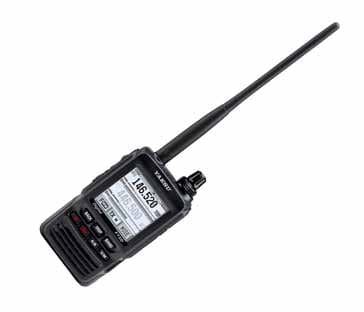CTCSS & Tone Burst Ham Radio Repeater Access
In order to prevent unwanted accesses, modern amateur radio repeaters require CTCSS tones to be transmitted.
Ham radio repeaters includes:
Repeater basics
Repeater channel offsets
CTCSS repeater access
How to use a repeater
In order to prevent amateur radio repeaters being unnecessarily activated, there is always an access method required.
Initially a simple tone burst was used at the beginning of every transmission made by stations trying to access the repeater. Nowadays, the use of CTCSS tones is almost universally used to access amateur radio repeaters.

Tone burst repeater access method.
The first method that was introduced to access repeaters and prevent spurious activation of them was to use a simple burst of a tone at the beginning of a transmission. This tone burst lasted for possibly less than half a second and the tone had to be of a specific frequency.
Often this tone burst was only required for the first transmission, but different repeaters had different logic and therefore the functionality could be slightly different.
The repeater would have an audio filter that would extract the tone, and only if it was present would the repeater activate.
The standard frequency generally adopted for this is 1750 Hz in Europe. A margin of around 25 Hz either way will normally access a repeater although it is wise to maintain the tone burst frequency more accurately than this.
CTCSS repeater access method
With the rise in the number of repeaters, channels have to be re-used relatively frequently. As a result it is sometimes possible for a station to access more than one repeater at any given time. This is obviously not desirable and a system known as CTCSS (Continuous Tone Coded Squelch System) has been introduced to overcome this problem.
CTCSS uses a sub-audible tone transmitted on the signal of the transmitter trying to access the repeater. The amateur radio repeater has a very sharp filter to detect whether the exact tone is present. It will also remove it before transmitting the required audio. Only when the correct CTCSS tone is present will the amateur radio repeater be enabled and it will allow audio to be re-radiated on the output channel signal.
CTCSS was initially introduced for commercial operators to allow several commercial radio users to share the same frequency without overhearing the other users conversations for normal simplex transmissions. It is possible to have several companies sharing the same frequency but each using their own CTCSS tone, so the squelch would only open for calls intended for them.
Amateur radio operation picked up on the idea and it has come into use for repeater operation.
For amateur radio repeater use, a small selection of the tones is used and in some areas of the globe these are allocated letters to indicate the particular tone. These letter can sometimes be transmitted in Morse at the end of a repeater transmission, instead of the “K” often used. In this way any radio amateurs will know which CTCSS tone to use to access a particular repeater.
| CTCSS Tones with Amateur Radio Designations | |||||||
|---|---|---|---|---|---|---|---|
| CTCSS | Hz | CTCSS | Hz | CTCSS | Hz | ||
| 1 (Tone A) | 67.0 | 14 | 107.2 | 27 | 167.9 | ||
| 2 (Tone B) | 71.9 | 15 (Tone H) | 110.9 | 28 | 173.8 | ||
| 3 | 74.4 | 16 | 114.8 | 29 | 179.9 | ||
| 4 (Tone C) | 77.0 | 17 (Tone J) | 118.8 | 30 | 186.2 | ||
| 5 | 79.7 | 18 | 123 | 31 | 192.8 | ||
| 6 (Tone D) | 82.5 | 19 | 127.3 | 32 | 203.5 | ||
| 7 | 85.4 | 20 | 131.8 | 33 | 210.7 | ||
| 8 (Tone E) | 88.5 | 21 | 136.5 | 34 | 218.1 | ||
| 9 | 91.5 | 22 | 141.3 | 35 | 225.7 | ||
| 10 (Tone F) | 94.8 | 23 | 146.2 | 36 | 233.6 | ||
| 11 | 97.4 | 24 | 151.4 | 37 | 241.8 | ||
| 12 | 100.0 | 25 | 156.7 | 38 | 250.3 | ||
| 13 (Tone G) | 103.5 | 26 | 162.2 | 122 | 69.3 | ||
Although the CTCSS tone system for amateur radio repeaters is more complicated than the original tone burst at the beginning of the transmission, virtually all modern VHF / UHF handhelds, mobiles and base station transceivers have this capability as standard.
The CTCSS system does require the equipment to be programmed for a particular repeater, but it does stop spurious accesses to repeaters when there is a lift in conditions, or when mobile stations are on the fringe coverage of two repeaters.
Whether you feel that the CTCSS tone system for amateur radio is convenient or not, the fact is that it is used almost universally and it is unlikely to change for the foreseeable future.
 Written by Ian Poole .
Written by Ian Poole .
Experienced electronics engineer and author.
More Ham Radio Topics:
What is ham radio
Callsigns
Morse code
Voice modes
Digital data modes
QRP operating
Operating awards
Codes & abbreviations
Ham bands overview
Operating via differnet propagation modes
Repeaters
Callsigns
Contact formats
Setting up a shack & buying equipment
Return to Ham radio menu . . .



